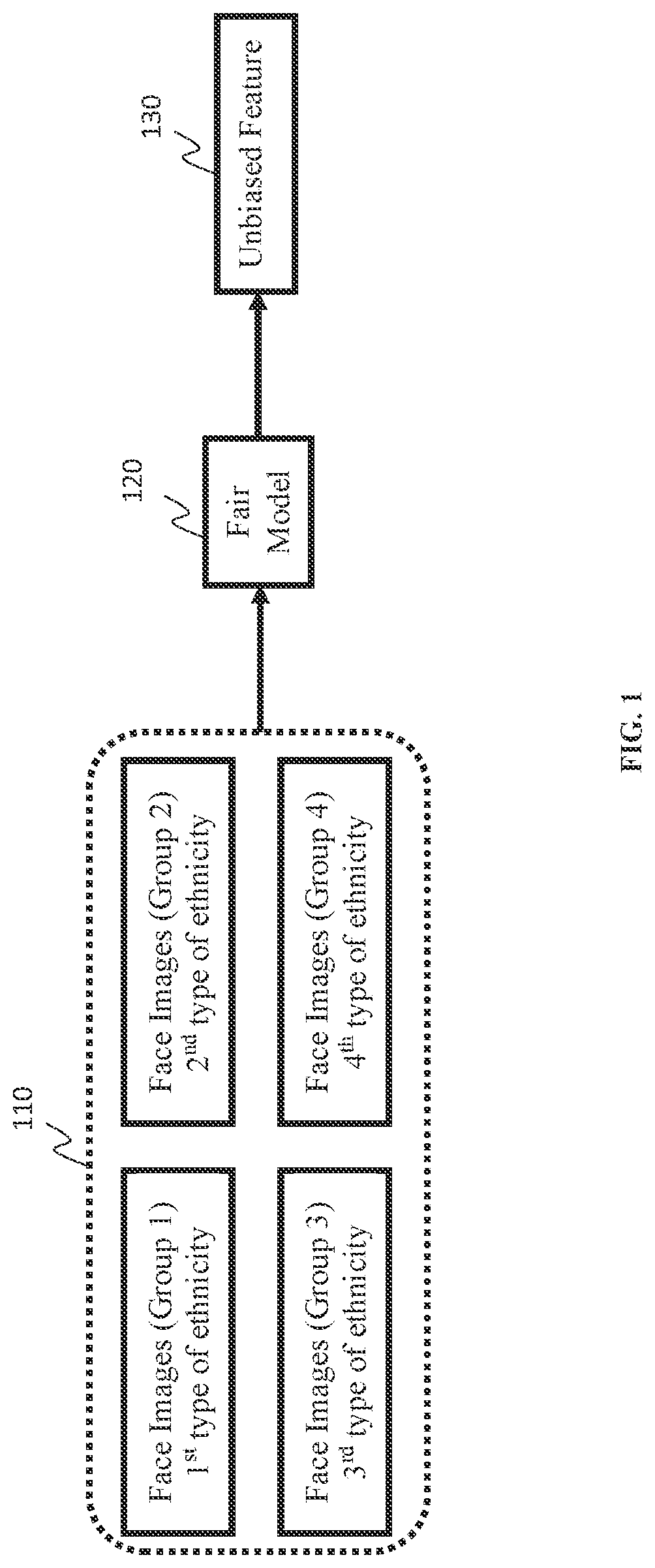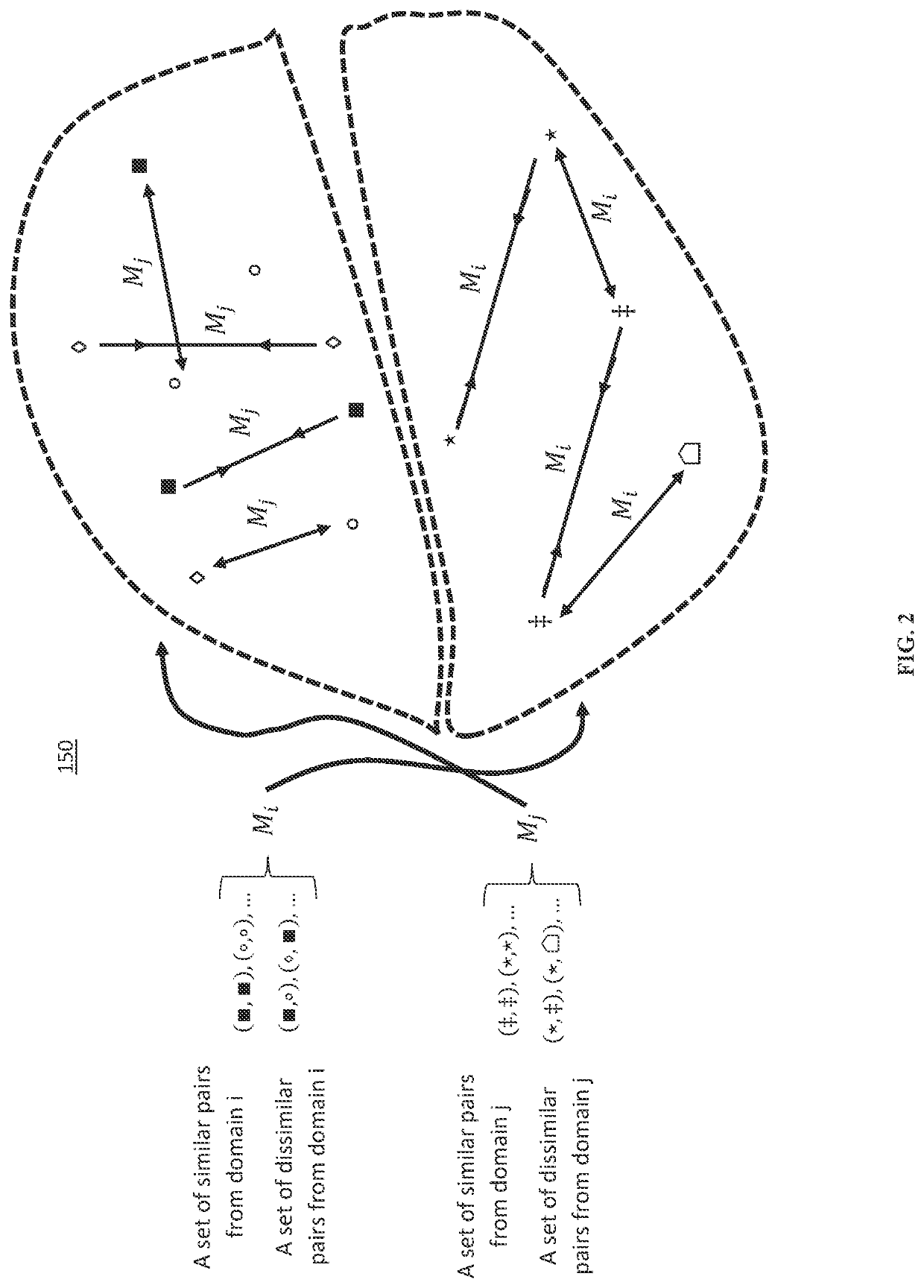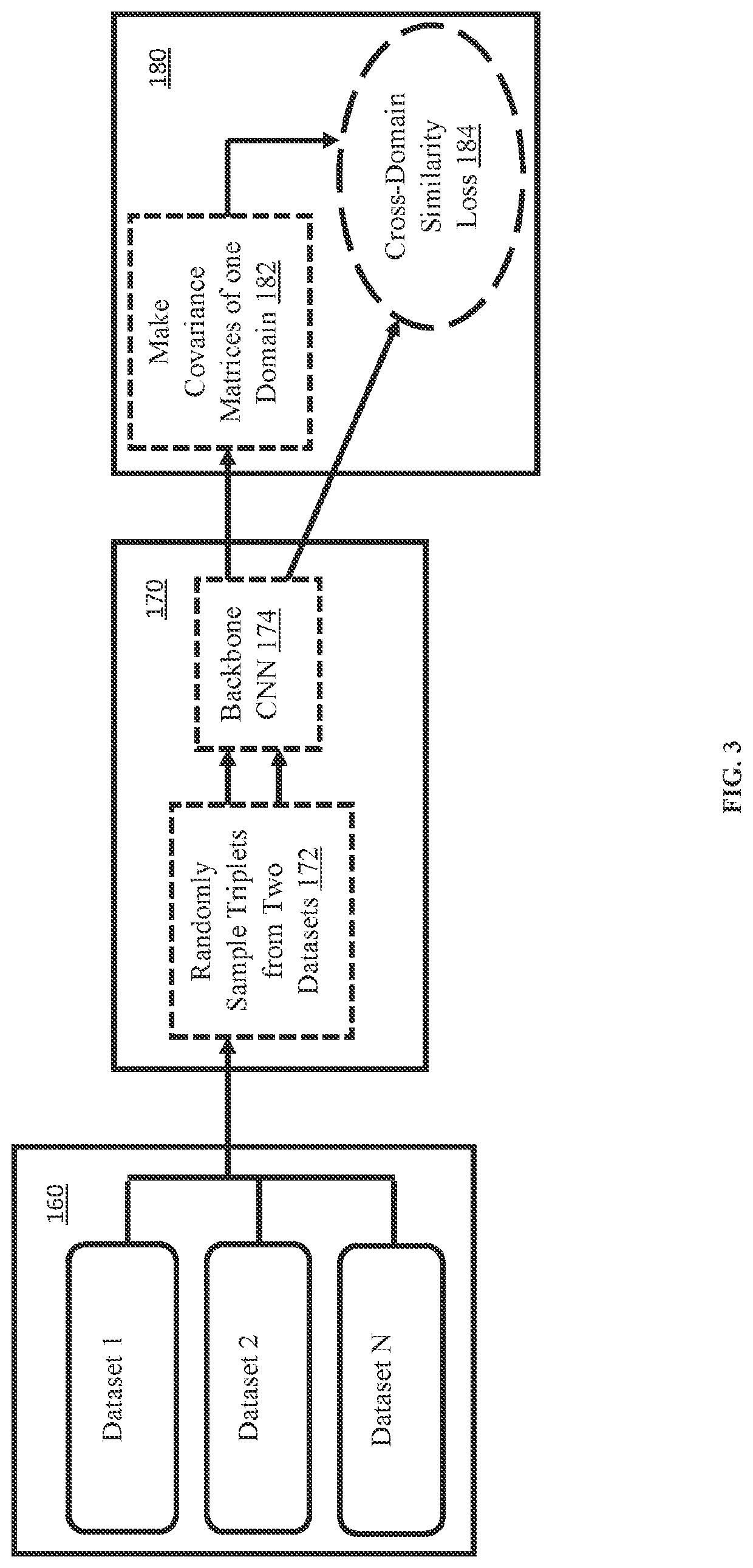Face recognition from unseen domains via learning of semantic features
a technology of semantic features and face recognition, applied in the field of face recognition models, can solve the problems of expensive collection and labelling of more data along the underrepresented attributes, models that do not generalize well to test data with unknown statistics, etc., and achieve the effect of improving face recognition
- Summary
- Abstract
- Description
- Claims
- Application Information
AI Technical Summary
Benefits of technology
Problems solved by technology
Method used
Image
Examples
Embodiment Construction
[0017]Domain generalization has emerged to address certain challenges but is mainly used for object classification with limited number of classes. Domain generalization aims to employ multiple labeled source domains with different distributions to learn a model that generalizes well to unseen target data at test time. However, many domain generalization methods are tailored to closed-set scenarios and thus, not directly applicable if the label spaces of the domains are disjoint. Generalized face recognition is a prominent example of open-set applications with a very large scale of categories, encouraging the need for further research in this area.
[0018]The exemplary embodiments introduce an approach to improve the issue presented from face recognition from unseen domains by learning semantically meaningful representations. In training a model, it is beneficial to exploit notions of semantic consistency between training data coming from various sources. As a result, the exemplary emb...
PUM
 Login to View More
Login to View More Abstract
Description
Claims
Application Information
 Login to View More
Login to View More - R&D
- Intellectual Property
- Life Sciences
- Materials
- Tech Scout
- Unparalleled Data Quality
- Higher Quality Content
- 60% Fewer Hallucinations
Browse by: Latest US Patents, China's latest patents, Technical Efficacy Thesaurus, Application Domain, Technology Topic, Popular Technical Reports.
© 2025 PatSnap. All rights reserved.Legal|Privacy policy|Modern Slavery Act Transparency Statement|Sitemap|About US| Contact US: help@patsnap.com



